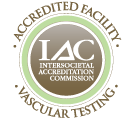SURGERY TO REMOVE LEG VEINS
Vein ligation and stripping is a minor invasive surgery that helps remove damaged veins and prevent further vein problems in the future. Ligation is used when the valves of the vein are damaged or diseased. The procedure itself is typically done as an outpatient procedure in your vein specialist’s office, an outpatient surgical center, or your local hospital. An overnight stay is usually not required and you can expect to go home the same day.
This procedure helps get rid of unsightly varicose veins, alleviates symptoms associated with vein problems (such as heaviness, pain or swelling), and can prevent further varicose veins in the future.
There are two procedures that can be done to remove varicose veins: ligation and stripping or microphlebectomy.
Preparing for Your Vein Ligation and Stripping Procedure
The procedure does not require a lot of preparation on your part, but there are a few things you can expect:
- You may be instructed to not take any over-the-counter ibuprofen or aspirin for up to a week before the procedure.
- To provide your specialist with a detailed list of medications, including herbal supplements you are taking to see if any of those must be stopped prior to the procedure.
- To be prepared for minor anesthesia to help you relax.
- For general anesthesia, you will be instructed to not eat or drink anything after 12:00 am the day of the surgery.
- To be required to have a licensed driver take you home.
Depending on the severity of your varicose veins and the number being removed, your surgeon will give you an expected duration of the procedure.
The Microphlebectomy Process
Microphlebectomy is done to reduce the surface of your varicose veins and to prevent further veins from appearing. This procedure is performed using local anesthetic. Before the procedure begins, an assistant will outline the area where the veins are to be removed and then the area will be thoroughly washed and prepared. The procedure itself is done using small needle punctures which is less invasive than vein stripping. The vein is then removed using a special hook apparatus. More than one vein may be removed during the procedure.
After the surgery, the small puncture spots will be closed (no stitches are required) and Steri-Strips will be applied. Your leg will be wrapped and a compression stocking may be used. You should be able to walk shortly after your procedure and about an hour of observation is required before you will be allowed to go home.
Recovery time for this procedure is one to two days.
Vein Ligation and Stripping
Vein ligation and stripping takes one to one and a half hours to complete. This procedure is done under general anesthesia, which means you will be asleep so that you cannot feel pain. In some cases, you may be able to remain awake, but a spinal anesthetic will be used – which makes the lower half of your body numb to pain.
During this procedure, the vein specialist will make several small incisions in your leg. The incisions are strategically placed around the damaged veins. Then, a thin, flexible piece of plastic wire is inserted into the vein and tied so that it can pull the vein out. Veins that are near the surface may be manually tied in a procedure referred to as ambulatory phlebectomy. After the problematic veins are removed, your surgeon will close the areas with stitches and apply bandages or a compression stocking.
Because this is more invasive, you will wear bandages for up to five days to control bleeding and swelling. Your legs may need to be in compression stockings for several weeks. Scarring is rare, but may occur.
Recovery Expectations
Aftercare for ligation and stripping is more in-depth than microphlebectomy procedures. You can expect:
- To take pain medications
- Take time away from heavy exercise, standing or lifting for up to two weeks
- Keeping your legs elevated any time you sit or lie down
- To not travel immediately following your procedure
- To be required to avoid hot baths, saunas, etc. until your vein expert clears you
- To wear compression stockings for several weeks
Understanding the Risks and Complications
Because both procedures are considered surgical, there are some risks and complications to consider, which include:
- Bleeding: This could be minor or severe, but should be resolved by applying bandages.
- Swelling of the Area: This is normal and should resolve itself in a few days. Your specialist will give you instructions as to how you can reduce the swelling.
- Numbness: The area may feel numb for several days post-surgery, but this should resolve itself.
- Clots: Clots are normal, but if you notice any swelling, tingling or burning, contact your specialist right away.
- Anesthesia Complications: While rare, some patients may suffer from complications due to the anesthesia. The anesthesiologist should supply you with a list of common side effects and how to combat them.
Contact Your Vascular Expert Right Away If You Have:
- Severe bleeding from your incisions that will not clot
- Leg pain that worsens
- Numbness or tingling in the feet
- High fever – anything over 100.4 degrees Fahrenheit
- Chest pain, shortness of breath or difficulty breathing



